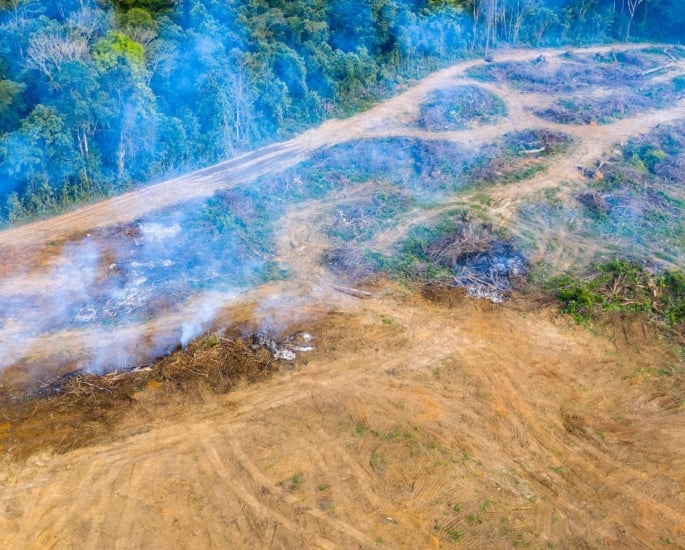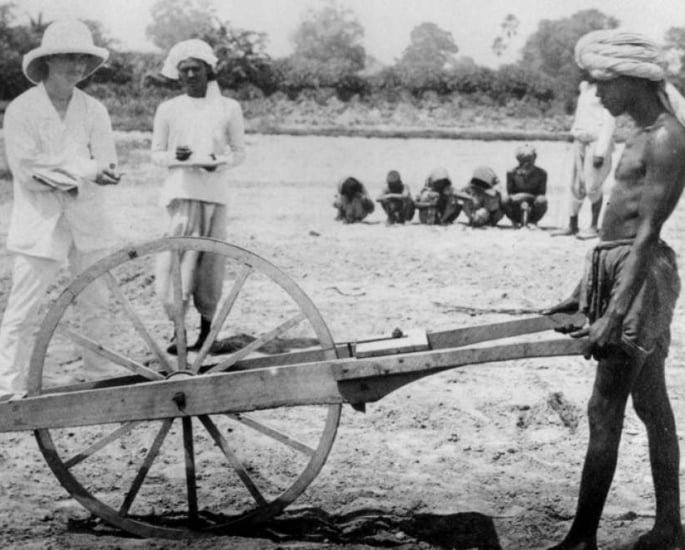How British Colonialism Changed India’s Landscape
British colonialism made its mark in India in a brutal way affecting not only lives but the natural and physical landscape of the country.
India is now one of the most populated countries in the world. However, its physical landscape still shows the aftereffects of colonialism.
The natural and physical land of the country transformed from untouched and respected to being massively exploited.
DESIblitz looks at how exactly British colonialism changed the physical and natural landscape of India.
Deforestation


India is home to some of the world’s most biodiverse and complex eco-zones.
However, the introduction of colonialism has had a huge impact on some of these biodiverse systems.
The harsh enforcement of British colonial powers led to a decrease in many of the natural areas in India.
Deforestation in particular is a widespread environmental issue that impacted India’s landscape during colonialism.
To make way for new transportation links, urbanisation, and plantations during colonialism, mass deforestation of India’s natural landscape occurred.
Meaning thousands to millions of trees were brutally chopped down to make way for new structures.
The impact of deforestation can be deadly.
The chopping down of trees can release carbon dioxide and other harmful greenhouse gases into the air and contribute to global warming.
It is also scientifically proven that trees are natural producers of oxygen. Therefore, fewer trees mean less oxygen and a poorer quality of air in the atmosphere.
There is no accurate number for the exact number of trees cut down during this period.
But, some historians believe around 200,000 square miles of forest were cleared between the 19th and 20th centuries.
Colonial deforestation caused major changes in the local climate of India and dramatically changed its biodiversity and health of local people.
Farming


Farming and agriculture have been an essential part of India’s backbone for centuries.
However, attitudes and methods towards farming drastically changed when British colonial powers took over India.
Subsistence farming in particular had been a traditional farming method used in India for decades as small farmers and landowners used this method to make a living.
However, when resources like spices, rice, and tea were commercialised, this put a stop to subsistence farming and small farmers lost their land and jobs.
Instead of having a hands-on approach to farming as traditional methods promoted, the British mentality was all about speed and increased production of goods.
This meant new farming technology was introduced that changed how crop varieties were grown.
Irrigation technology was used widely during British colonialism whereby increased and often artificial water is pumped into the soil for crops and vegetation.
However, this technology involved chemicals meant to speed up the rate of growth yet was harmful to the natural landscape.
Due to a reduction of traditional farming methods, the grounds in certain regions of India still face significant environmental issues as the damage has been irreparable.
Urbanisation of Cities


Urbanisation includes the growth of urban areas meaning an increased population in cities and an increase in industrial buildings and economic opportunities.
During British colonialism, urbanisation was driven by political and economic means as it was seen as a way to establish total British control over India and push British markets into cities.
Through this colonial urbanisation, many cities were transformed into industrial trading hubs.
Several new cities were also recognised across India including Delhi, Kolkata, Mumbai, and Chennai, all of which we are familiar with today.
However, this led to mass displacement of communities across India as many people were forced to leave their homes and reside elsewhere due to the building of new structures and expansion of these cities.
Rural lives became forever changed by urbanisation and many people could not afford to live in these newly built cities leading to a life of poverty and homelessness.
However, urbanisation was not necessarily all bad as it did improve transportation links between cities.
There were also a few new employment opportunities within these cities for those who had the means to access them.
India remains a significant urban city to this day with over 30% of the population continuing to live in urban areas.
Land Ownership


British colonialism also introduced an onslaught of private land ownership that changed attitudes towards the landscape of India.
Pre-colonialism there was a communal approach towards land ownership meaning it was owned and shared by local communities or shared amongst farmers.
This approach to ownership was mainly based on the social and cultural traditions of India.
These traditions followed collective thinking in India pre-colonialism that land was a gift of nature and was shared freely as such without boundaries of private ownership.
However British colonial powers disregarded many of these traditional approaches and introduced laws and rulings like individual land ownership.
This did not respect the communal approach towards land, and it meant many small farmers lost their land and were displaced and traditional and sustainable farming methods were reduced.
It also enforced policies that forced farmers to pay high taxes on the land they owned which often led to the loss of land if they could not pay and farmers losing their livelihoods.
These policies by British rule were used to generate land revenues which meant even more money lining the pockets of British authorities.
This colonial rule also enforced an economic and political mentality to land that twisted attitudes toward land ownership in India.
There was no longer a traditional concept of shared or free land as private ownership and land hierarchies were introduced and the impacts of this are still seen to this day.
Exploit of Natural Resources


India has been home to a variety of natural resources for centuries that have been used to enhance people’s lives.
British colonial powers like the East India Company took great interest in extracting and exploiting these natural resources in India.
Resources such as spices, cotton, opium, indigo, and tea were all of particular interest to the British.
Using a system of trade and production, the East India Company were able to extract these vital resources from India’s natural land and export them across Europe.
However, this method of exportation had a significant environmental, economic, and social impact on India.
The traditional spice networks in India were set up by local networks but were destroyed by British colonial exportations.
These colonial powers also set up large spice plantations for mass export which meant the local spice networks were destroyed and individuals lost their livelihoods.
The impact of these plantations on the environment was also incredibly damaging.
Monoculture plantations ended up replacing traditional Indian landscapes like forests meaning soil degradation and a loss of biodiversity.
Chemical fertilisers used to speed up resource production also massively damaged the environment causing water pollution and further soil issues.
The British colonial manipulation of India from a natural land to a commercialised country had set out a series of events that changed the physical landscape of the country forever.
The changes to India’s landscape inflicted by British colonialism continue to shape the landscape and the lives of Indian people to this day.
Many of the changes to the landscape have left lasting damage that has forever shifted the atmosphere in India, increased pollution, and damaged communities.